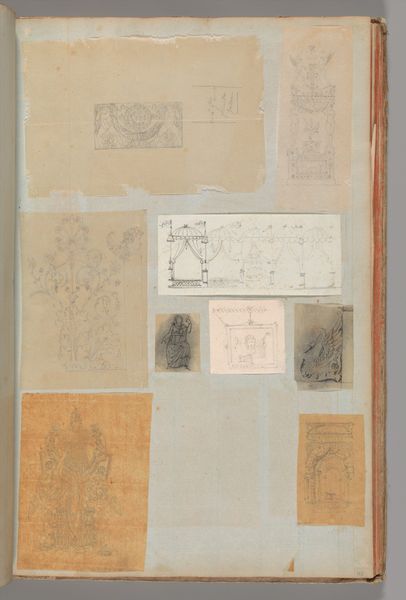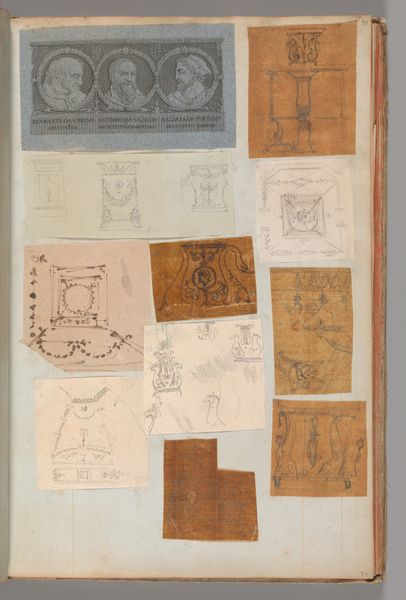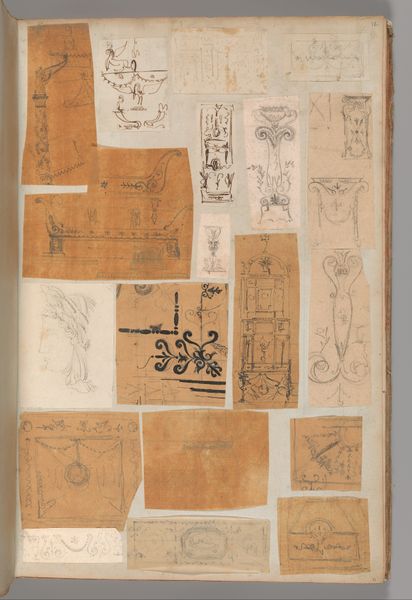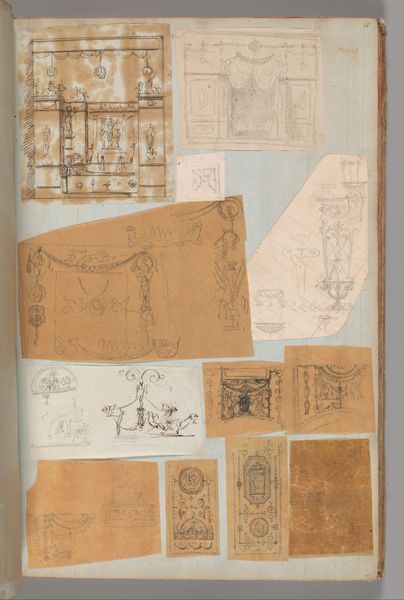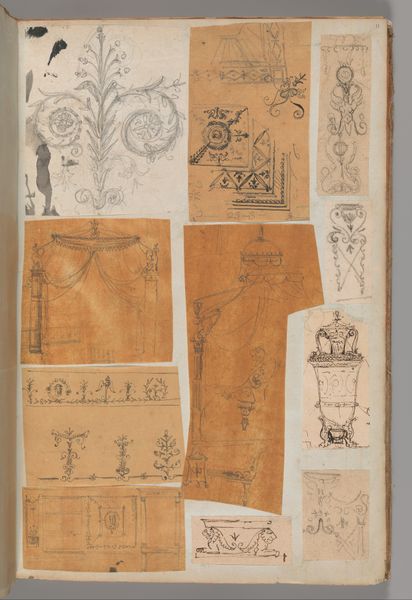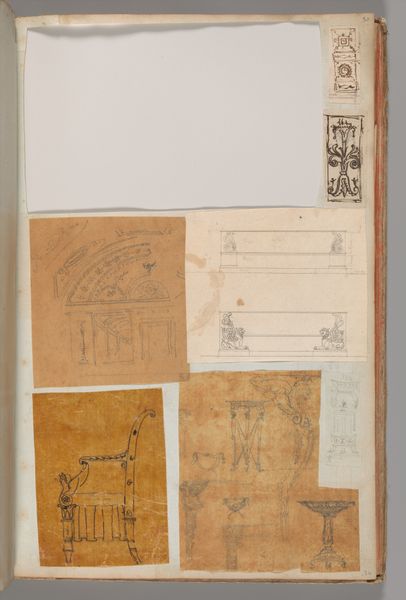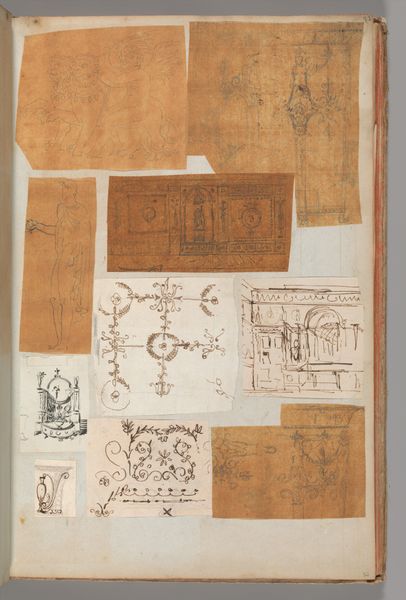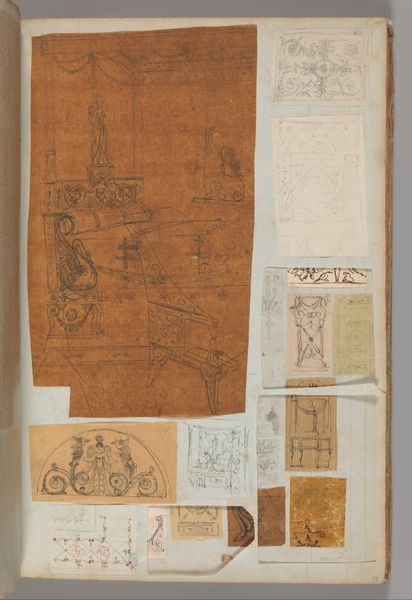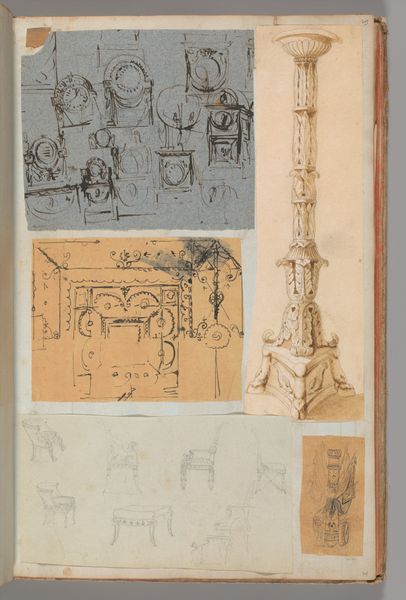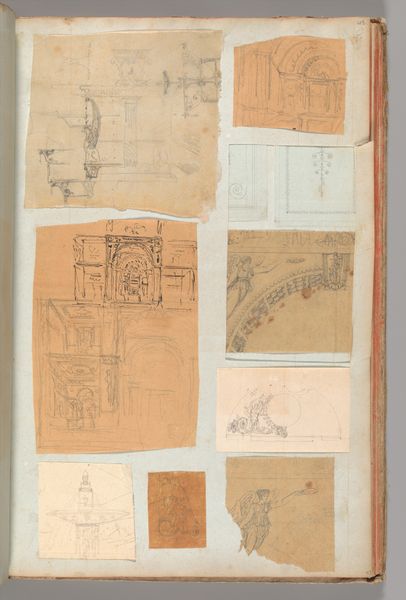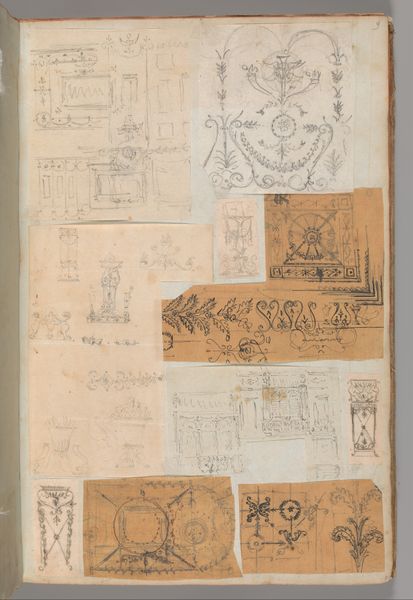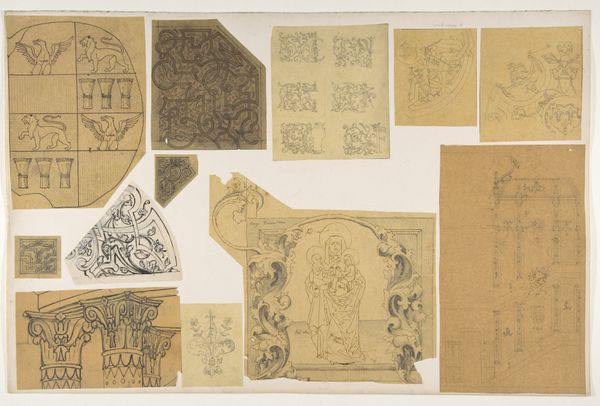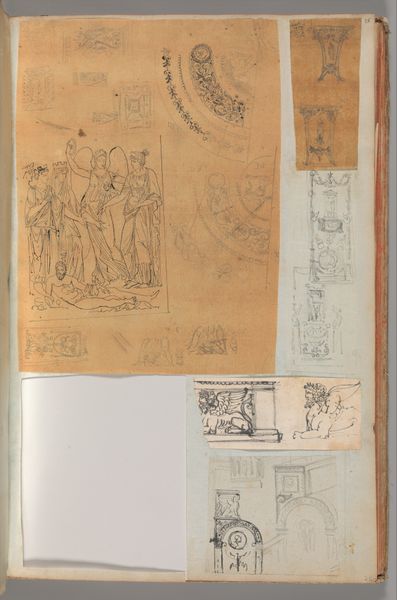
Page from a Scrapbook containing Drawings and Several Prints of Architecture, Interiors, Furniture and Other Objects 1795 - 1805
0:00
0:00
drawing, paper, ink, architecture
#
drawing
#
neoclassicism
#
paper
#
ink
#
architecture
Dimensions: 15 11/16 x 10 in. (39.8 x 25.4 cm)
Copyright: Public Domain
Editor: Here we have a page from a scrapbook containing drawings and several prints of architecture, interiors, furniture, and other objects, made with ink on paper by Charles Percier, sometime between 1795 and 1805. It's like a visual encyclopedia of Neoclassical design. How do you interpret this collection of images? Curator: This scrapbook page isn't just a collection of drawings; it’s a window into the aspirations and ideologies of its time. Think about the Neoclassical period, a time obsessed with ideas from ancient Greece and Rome, but through a very particular, often skewed lens. It’s easy to look at these architectural elements and see them as beautiful, harmonious forms. But who did this “harmony” serve? Whose stories were being told through these grand buildings and meticulously designed objects? Editor: That’s a good point. It wasn’t exactly a democratic aesthetic. Curator: Exactly. We see all these figures in authoritative poses…they weren’t designed for just anyone. Also consider the labor behind them: the enslaved people who mined the marble, the artisans whose names are lost to history, crafting these visions of power and privilege. When we engage with works like this, we need to be critical about whose voices are amplified and whose are silenced. Editor: So, when looking at this, we need to ask ourselves, who gets to inhabit this aesthetic world and what does it represent? Curator: Precisely. And how has that legacy impacted our present? Neoclassicism's emphasis on order and hierarchy can still be seen today. Editor: I’ll definitely look at Neoclassical art differently now, considering the power dynamics inherent within the style. Curator: Excellent. By recognizing those social forces at play in the creation and consumption of this work, we gain a far more complete understanding.
Comments
No comments
Be the first to comment and join the conversation on the ultimate creative platform.
